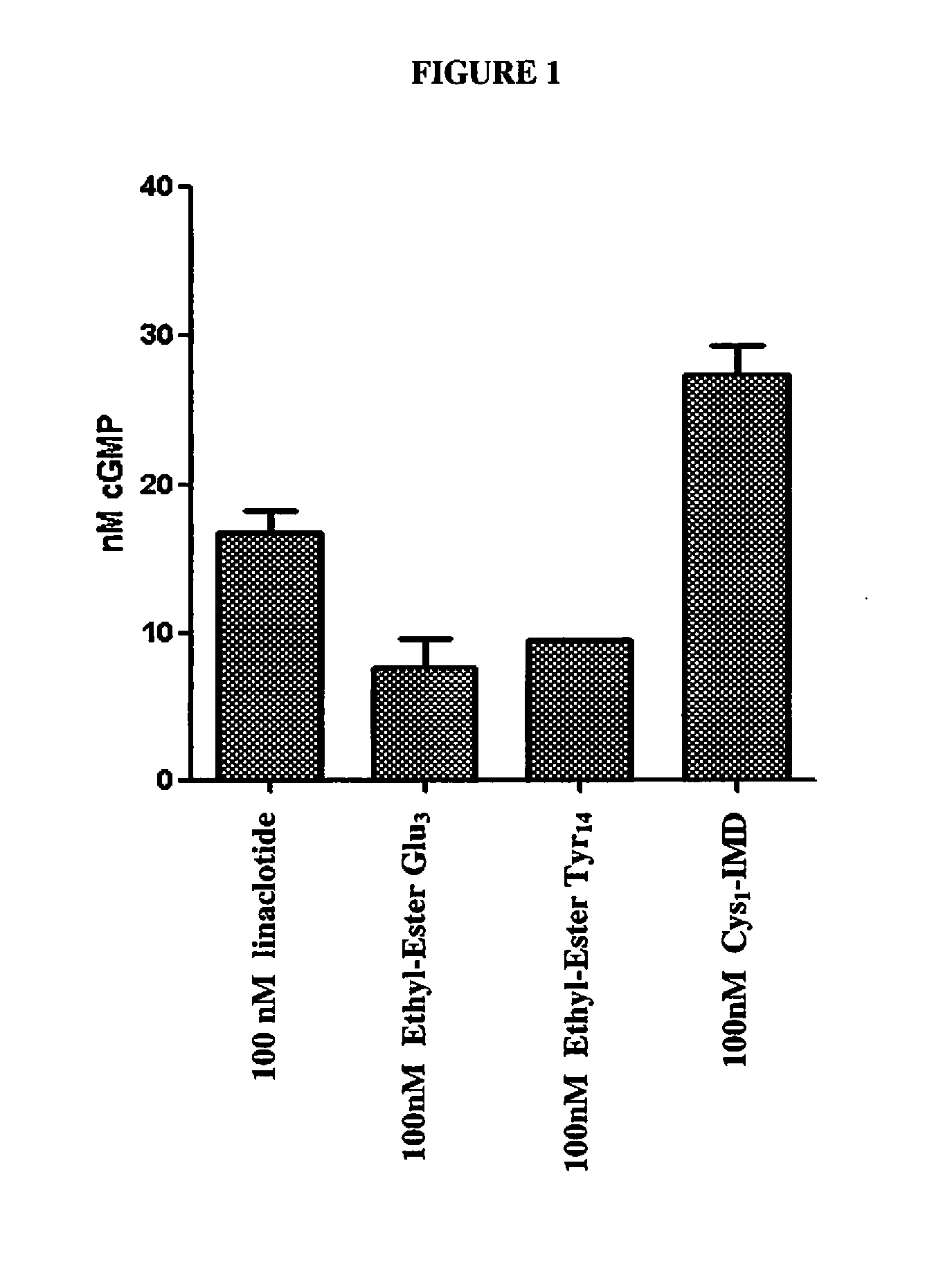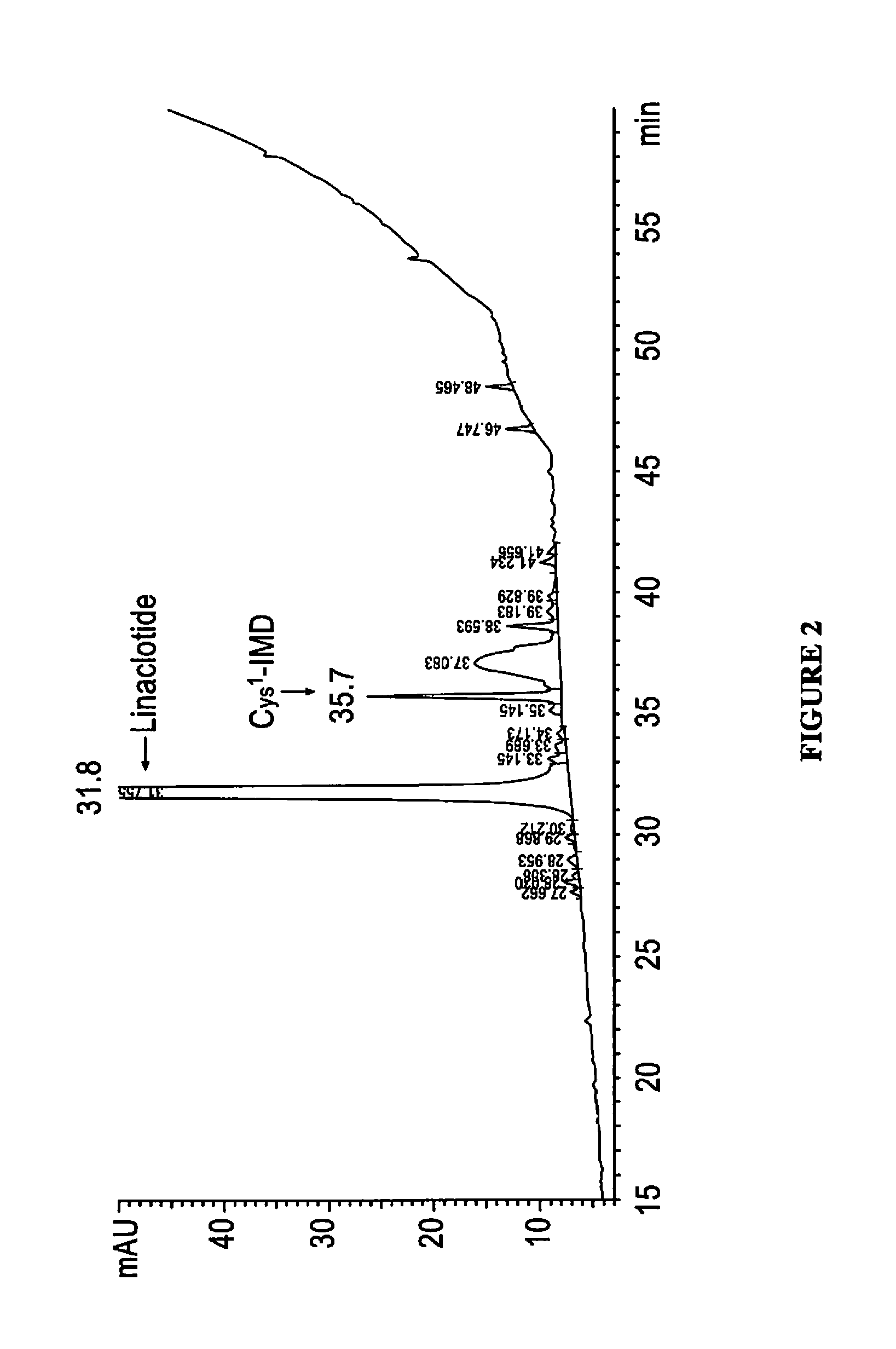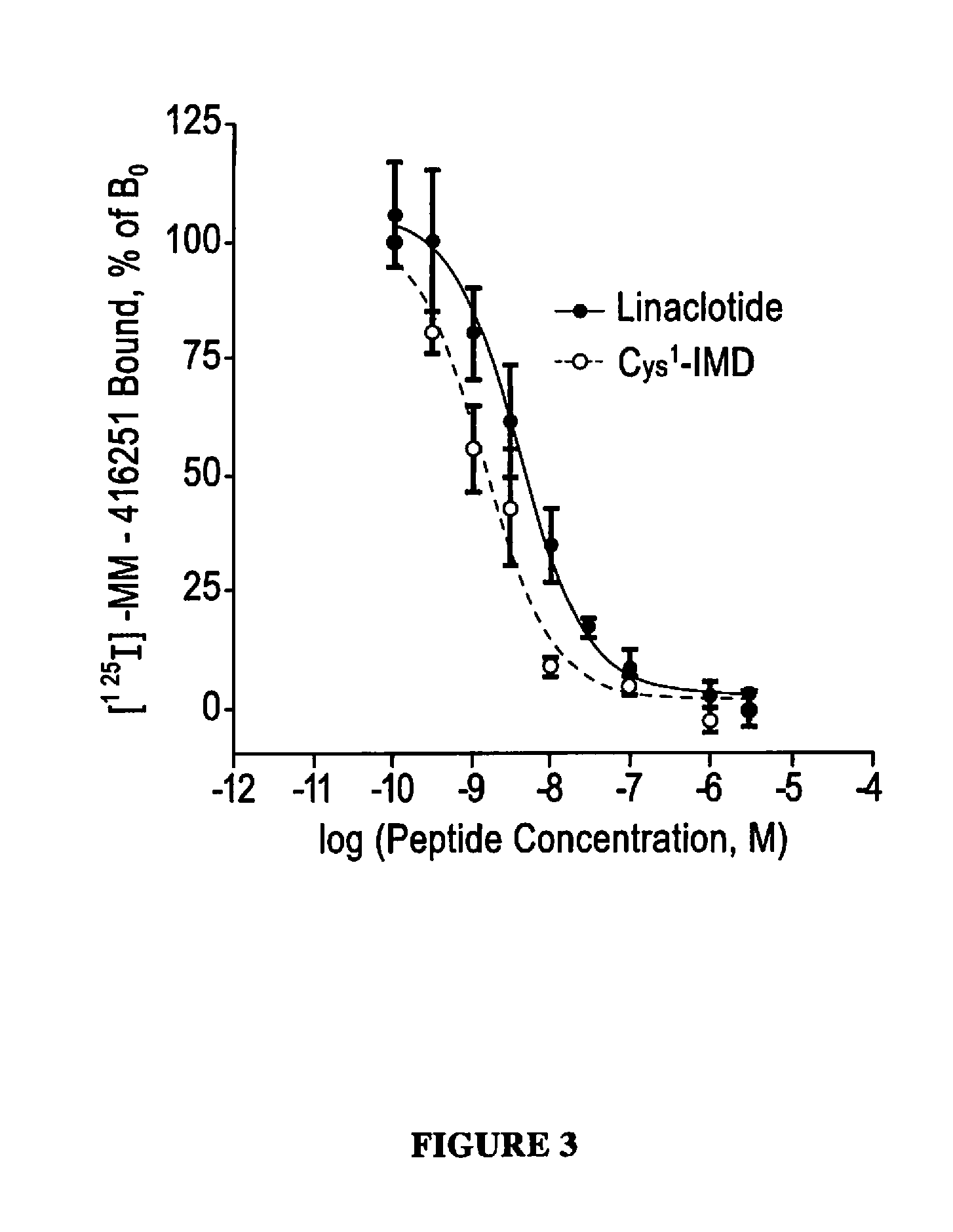Treatments for Gastrointestinal Disorders
a technology for gastrointestinal disorders and compositions, applied in the field of peptides, compositions and methods for treating gastrointestinal disorders, can solve the problems of patients with ibs, unmet medical needs, and reduced quality of life of patients
- Summary
- Abstract
- Description
- Claims
- Application Information
AI Technical Summary
Benefits of technology
Problems solved by technology
Method used
Image
Examples
example 1
cGMP Accumulation in T84 Cells for Analysis of GC-C Activity
[0186]For the cGMP assay, 4.5×105 cells / mL of T84 cells were grown overnight in 24 well tissue culture plates. On next day, the T84 cells were washed twice with 1 mL of DMEM (pH 7). After the second wash, the cells were incubated with 450 μL of 1 mM isobutylmethylxanthine (IBMX) in pH 7 buffer for 10 minutes at 37° C. to inhibit any phosphodiesterase activity. The peptides were then diluted in DMEM buffer (pH 7) to a 10× concentration. The peptide solution of 50 μL was diluted to a final volume of 500 μL with the T84 cells, bringing each peptide concentration to lx. The peptides were tested in duplicate at 100 nM.
[0187]There was no peptide control used to determine endogenous levels of cGMP. Peptides were incubated for 30 minutes at 37° C. After 30 minutes, the supernatants were removed and the cells were lysed with 0.1 M HCl. The cells were lysed for 30 minutes on ice. After 30 minutes, lysates were pipetted off and placed...
example 2
Relative Binding Affinity of Exemplary Peptides to the GC-C Receptor of T84 Cells
[0189]The relative binding affinities of linaclotide and Cys1-IMD to the guanylate cyclase-C receptor (GC-C) were determined using a competitive-binding assay in which the peptides competed with a known GC-C agonist, porcine-derived heat-stable enterotoxin (pSTa), for binding sites on cell-surface GC-C receptors on human colonic epithelial (T84) cells. The pSTa was radiolabeled with 125I to enable measurement of its receptor binding. The competitive-binding assay was performed by adding various concentrations of each peptide (0.1 to 3,000 nM) to 0.20 mL reaction mixtures containing Dulbecco's modified Eagle's medium (DMEM), 0.5% bovine serum albumin (BSA), 2.0×105 T84 cells, and 170 pM [125I]-pSTa (200,000 cpm). The data were used to construct competitive radioligand-binding curves and determine the relative binding affinities of linaclotide and Cys1-IMD, as measured by their IC50 and Ki values.
[0190]Bo...
example 3
cGMP Response in T84 Cells Induced by Exemplary Peptides
[0191]Linaclotide and Cys1-IMD were tested for guanylate cyclase-C (GC-C) agonist activity in T84 cells as follows. In each well of a 96-well plate, approximately 200,000 T84 cells / well was first incubated with 1 mM 3-isobutyl-1-methylxanthine (IBMX) in 0.18 mL of Dulbecco's modified Eagle's medium (DMEM) for 10 minutes at 37° C. Each peptide was diluted to final concentrations ranging from 0.1 to 10,000 nM, and 0.02 mL of each dilution was added in duplicate to a 96-well plate containing the T84 cells, for a final volume of 0.20 mL per well. The peptide reactions were incubated for 30 min at 37° C. Following the incubation, the supernatants were removed and discarded and the cells were lysed with cold 0.1 M hydrochloric acid (HCl) for 30 min on ice. The cell debris was removed by centrifugation and the concentration of guanosine 3′,5′-cyclic monophosphate (cyclic GMP) in each lysate was determined using liquid chromatography w...
PUM
| Property | Measurement | Unit |
|---|---|---|
| Percent by mass | aaaaa | aaaaa |
| Fraction | aaaaa | aaaaa |
| Fraction | aaaaa | aaaaa |
Abstract
Description
Claims
Application Information
 Login to View More
Login to View More - R&D
- Intellectual Property
- Life Sciences
- Materials
- Tech Scout
- Unparalleled Data Quality
- Higher Quality Content
- 60% Fewer Hallucinations
Browse by: Latest US Patents, China's latest patents, Technical Efficacy Thesaurus, Application Domain, Technology Topic, Popular Technical Reports.
© 2025 PatSnap. All rights reserved.Legal|Privacy policy|Modern Slavery Act Transparency Statement|Sitemap|About US| Contact US: help@patsnap.com



